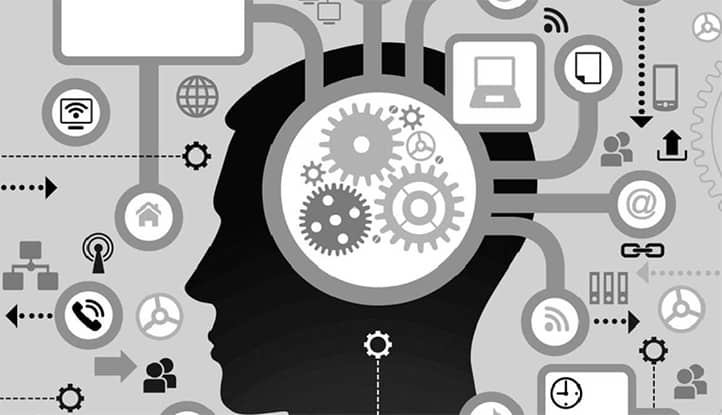Social engineering is a set of methods and techniques aimed at influencing people to obtain specific information, manipulate their behavior, or prompt actions beneficial to the manipulator. The foundation of social engineering lies in exploiting human factors: trust, emotions, ignorance, or weaknesses.
The term “social engineering” is often used in the context of cybersecurity, where fraudsters deceive people into disclosing confidential information, such as passwords or bank card details. However, this phenomenon is not limited to the virtual space. It can also be observed in real life: in convincing someone to make a purchase, influencing important decision-making, or manipulating at work or in personal relationships.
In today’s world, characterized by rapid technological advancement and global digitalization, social engineering has become one of the most powerful and dangerous forms of manipulation. This is due to several factors:
- Technological development and availability of information. People increasingly trust online resources and digital platforms, often leaving sensitive data there. Malicious actors use this data to create personalized attacks that appear highly credible.
- Vulnerability of the human psyche. Even well-informed individuals can sometimes succumb to influence when pressured by fear, urgency, or emotional triggers. Social engineers skillfully manipulate these aspects, forcing a person to make decisions they would never consider under other circumstances.
- Rise in fraud cases. Statistics indicate a steady increase in fraudulent attacks based on social engineering techniques. For example, phishing emails, fake “support service” calls, or manipulations through social networks have become commonplace.
- Social influence. Social engineering goes beyond fraud: it is used in marketing, politics, and propaganda. Through manipulation of mass consciousness, people make decisions they believe are their own, although in reality, they were provoked.
Thus, social engineering is not only a means of gaining advantage but also a serious threat to privacy, financial security, and personal autonomy. Understanding its mechanisms is an important step in protecting against manipulation in any area of life.

Social Engineering: Essence and Key Concepts
Social engineering is a complex phenomenon that combines knowledge of psychology, sociology, and modern technologies. It is based on interactions between people and their behavior, with the main goal being to influence consciousness and subconsciousness for the manipulator’s benefit. This concept encompasses a wide range of practices, from harmless forms of persuasion to harmful methods of fraud and deception.
In our time, when information has become one of the most valuable resources, social engineering is particularly relevant. It is used in cybersecurity, where fraudsters gain access to confidential information, as well as in interpersonal relationships, politics, and marketing. Regardless of the context, the essence of social engineering remains unchanged: it is the influence on people through the use of their emotions, weaknesses, and trust.
What Is Social Engineering?
Social engineering is the art of manipulating people to get them to perform certain actions or provide important information. The primary strategy of a social engineer is to gain the trust of their “victim” or create a situation where the victim willingly provides the necessary data.
Social engineering tools can vary:
- Persuasion based on emotions (fear, trust, compassion);
- Deception by providing false information;
- Using urgency or pressure to prompt actions without reflection.
Example: Fraudsters posing as bank employees or support staff manipulate users into revealing passwords or card details.
In a broader sense, social engineering includes any methods that influence decision-making by manipulating a person’s behavior.
The Role of the Human Factor in Manipulations
The human factor is key in social engineering, as all manipulations are based on the natural traits of the human psyche. People have certain emotional reactions, habits, and trust in authority figures that can be exploited by social engineers.
Key aspects of the human factor used in manipulations:
- Emotionality. Fear, joy, compassion, and surprise can become catalysts for manipulative actions. For example, a fraudster reports a “threat” and urges a person to act immediately without analyzing the situation.
- Trust in authority. People tend to trust representatives of well-known brands, government institutions, or professional structures. Manipulators take advantage of this by posing as “bank representatives” or “police officers.”
- Social habits. The habit of answering questions, helping others, or performing certain actions upon request can also be exploited for manipulation.
The Difference Between Psychological Influence and Manipulation
It is important to understand that not every psychological influence is manipulation. The difference lies in the goals, methods, and outcomes.
- Psychological influence is a natural part of interpersonal communication when one person influences another to convey information, persuade, or motivate. This influence is ethical if it does not violate the freedom of choice and interests of the other person.
- Manipulation is a form of influence with a hidden goal aimed at the manipulator’s benefit. The interests of the victim are ignored, and manipulation is often accompanied by deception or misleading actions.
Example: Convincing a friend to choose a healthy lifestyle is psychological influence, whereas pressuring them through fear or guilt for personal gain is manipulation.
Understanding these differences helps to recognize manipulation and build more ethical relationships in everyday life.

Historical Roots of Social Engineering
Social engineering, though it may seem like a modern term, has deep historical roots. For millennia, people have used various manipulation techniques to achieve their goals, influence others, or gain advantages in social, political, or military spheres. From tricks in ancient myths to modern cyber manipulations, social engineering has undergone significant evolution, changing alongside societal development.
This practice is intrinsically linked to the progression of human civilization. In different historical eras, manipulative methods took on unique forms, reflecting the level of knowledge, culture, and technology of the time. While earlier tools of manipulation were primarily charisma, persuasion, and psychological techniques, today they are complemented by sophisticated technical methods exploiting vulnerabilities in modern technology.
Early Mentions and Examples of Manipulative Methods
Social engineering, in its earliest forms, appeared in ancient times. One of the most famous examples is the use of tricks in myths and legends.
- Ancient World. In Greek mythology, the story of the Trojan Horse is a striking example of social engineering. The Greeks constructed a large wooden horse, hiding soldiers inside. By convincing the Trojans that it was a gift from the gods, they secured access to the city. This example demonstrates how manipulation of trust and perception can lead to significant outcomes.
- Political Intrigues. In the Middle Ages and the Renaissance, manipulative methods were actively employed in politics. A notable example is Niccolò Machiavelli’s The Prince, which described strategies for manipulation to maintain power. Machiavelli believed that the ends justify the means, forming the basis for many political manipulation tactics.
- Religious Manipulations. Throughout history, religion was often used to influence masses. Preachers might use fear of punishment or promises of salvation to control the behavior of large groups of people.
The Evolution of Manipulative Approaches with Technological Advancements
With technological progress, methods of social engineering have significantly advanced. New technical achievements have enabled manipulators to employ not only psychological techniques but also technological tools.
- Industrial Revolution. The industrialization era brought new opportunities for manipulation, especially in advertising and mass media. Advertisers began employing psychological techniques to create demand for their products. For instance, emotional appeals in advertising, targeting fear or desire, became a primary tool for influencing consumers.
- The Era of Mass Media. In the 20th century, with the advent of radio and television, social engineering reached a new level. Politicians, advertisers, and opinion leaders actively used these channels to manipulate the masses. One of the most famous examples is the use of propaganda during World War II, where states influenced their citizens through radio, newspapers, and posters.
- The Digital Era. In the 21st century, social engineering has reached its peak due to the emergence of the internet, social media, and smartphones. Today, manipulators use phishing, fake accounts, targeted emails, and other methods to access personal information or influence user behavior. Modern data analysis algorithms allow for creating highly precise manipulative campaigns targeted at specific audiences.
The evolution of social engineering shows that its essence remains unchanged—impacting people by exploiting their weaknesses. However, the methods and tools continuously adapt to new realities, making this phenomenon increasingly complex and dangerous.

Modern Forms and Methods of Social Engineering
Social engineering in today’s world has taken on a new scale due to technological progress and digitalization. Manipulators now have at their disposal both classical psychological methods and high-tech tools, making their actions more sophisticated and harder to detect. These methods target human vulnerabilities such as trust, fear, curiosity, or the desire for personal gain.
It is essential to understand that modern social engineering is not confined to the online environment. It spans all areas of life where people interact, including social networks, messaging apps, email, phone calls, and even face-to-face encounters.
Phishing, Vishing, Smishing: Popular Cyber Schemes
- Phishing. This is one of the most common forms of social engineering online. Attackers send fake emails that mimic official messages from banks, online stores, or other institutions. Their goal is to trick users into revealing confidential information, such as passwords, credit card details, or personal data.
Example: A user receives an email with the subject line “Your account has been blocked,” containing a link to a fake bank website. Upon clicking the link, the person enters their credentials, which are immediately captured by the attackers. - Vishing. This form of telephone fraud involves attackers posing as representatives of banks, police, or other authoritative organizations. They may use psychological pressure, intimidation, or promises of benefits to extract the needed information.
Example: A phone call reporting suspicious activity on a bank account, where fraudsters ask the user to “verify” their information. - Smishing. These manipulations occur via SMS messages. People receive messages prompting them to click a link to, for instance, confirm a parcel delivery or claim a prize. In reality, the link may lead to a malicious website designed to collect personal data or infect the device with viruses.
Example: An SMS with the text “Your parcel is delayed. Click the link to update your delivery address.”
Manipulations Through Social Media and Messaging Apps
Social media and messaging apps have become ideal environments for manipulations due to their popularity and the ability to quickly establish contact with large numbers of people.
- Fake Accounts. Fraudsters create fake profiles, pretending to be acquaintances, colleagues, or company representatives. Their goal is to gain trust and then extract money or confidential information.
Example: An attacker writes on behalf of a friend, urgently asking to borrow money for an unexpected problem. - Social Ads with Manipulative Content. The use of targeted ads that provoke strong emotions, such as fear or outrage. This can involve both commercial and political manipulation.
- Fake Contests and Giveaways. Organization of fake contests to collect participants’ personal data.
Example: An offer to participate in a giveaway of a smartphone in exchange for filling out a form with confidential information. - Massive Disinformation Campaigns. Manipulators use social networks to spread false information that can influence public opinion or harm the reputation of specific individuals.
Psychological Pressure in Real Life: Examples
Social engineering is not limited to the digital realm. In real life, manipulators also use psychological techniques to achieve their goals.
- Fake Inspectors or Representatives of Organizations. People posing as company employees to gain access to private premises or confidential information.
Example: Fraudsters pretending to be a maintenance team gain access to an office to install “new equipment,” which is actually surveillance devices. - Emergency Scenarios. Using stressful conditions to elicit a desired reaction.
Example: In an ATM queue, someone urgently asks for a money transfer for a “relative in the hospital,” exploiting sympathy. - Emotional Manipulation. Inducing guilt, fear, or even joy to achieve a goal.
Example: A scammer convinces someone they’ve won a large sum of money but needs to pay a “tax” to claim the prize.
Modern methods of social engineering exploit both technological and psychological vulnerabilities. Understanding these techniques is key to protecting oneself from manipulation. Awareness of risks and critical thinking skills can be the best defense against such threats.

Truth About Social Engineering
Social engineering is not just a set of tricks for manipulating people but a phenomenon that significantly impacts society as a whole and each individual in particular. It leverages natural emotions, habits, and weaknesses to achieve its goals, often causing serious consequences for its victims.
Why Does It Work? Human nature tends to trust, help, or seek easy solutions. These traits become the primary tools in the hands of manipulators. Emotions, haste, and a lack of information make people vulnerable, even if they have previously encountered similar situations.
Real Impact on Society and Individuals
Social engineering has both individual and global consequences:
Individual Level. People who fall victim to social engineering face financial losses, privacy violations, emotional stress, or even legal problems.
- Example: A phishing victim may lose money from their bank account or have their data entered into a malicious database, leading to repeat attacks.
Global Level. Manipulative techniques influence public opinion, political elections, or economic stability. Disinformation campaigns can destabilize countries or spark conflicts.
- Example: The spread of fake news on social media aimed at polarizing society.
The importance of recognizing these risks becomes evident when you understand that they can affect anyone, regardless of education or professional experience.
Why Do People Become Vulnerable to Manipulation?
The main reasons for people’s vulnerability to social engineering include:
- Desire to Trust. People are naturally inclined to trust others, especially if the information or request comes from a source that seems authoritative.
- Example: An employee receives a request from a “manager” asking for access to confidential data.
- Social Norms. The desire to be polite and not contradict authority may lead to fulfilling even strange requests.
- Example: A stranger on the street asks someone to show their documents, and the victim complies without asking additional questions.
- Haste or Distraction. In situations requiring quick decisions, people often fail to critically assess the information.
- Example: Receiving an SMS demanding immediate payment confirmation to avoid account blocking.
- Emotional Reaction. Fear, sympathy, joy, or anger can catalyze poor decision-making.
The Role of Emotions, Trust, and Hasty Decisions
Emotions are one of the strongest levers in social engineering:
- Fear. The threat of losing money, reputation, or safety triggers a protective instinct. Under such conditions, people act impulsively without considering potential manipulations.
- Example: A phone call from a “bank” about suspicious account activity may lead someone to share confidential information.
- Trust. Manipulators skillfully exploit trust in authorities, acquaintances, or brands. They create an illusion of safety to obtain the necessary information.
- Example: Fake emails from a popular service asking to update account details.
- Hasty Decisions. Limited time for reflection forces people to make decisions without proper analysis of the situation.
- Example: A “special offer” valid only for a few hours prompts users to quickly make a purchase or register without verifying the information’s authenticity.
Human nature is both a strength and a weakness in the face of modern social engineering. Understanding how manipulation works and developing critical thinking helps minimize risks. Emotional resilience and awareness of basic influence methods provide better protection against the tricks of modern manipulators.

Myths and Misconceptions About Social Engineering
Social engineering as a phenomenon has not only real aspects but also a significant number of myths and stereotypes surrounding it. Many people exaggerate or distort the nature of this phenomenon, believing all its manifestations are purely negative or even omnipotent. Sometimes this contributes to fear and misinformation, hindering an objective assessment of risks.
It is also worth considering that social engineering does not always aim to cause harm. Some of its techniques may be used with noble intentions, such as for education or improving social interactions. However, it is crucial to distinguish between real threats and exaggerations and to clearly understand where beneficial methods end and manipulation begins.
Common Stereotypes
Social engineering often becomes the subject of mystification, creating several stereotypes:
- “It only works on naive people.” Many believe manipulation only affects those who lack sufficient education or experience. In reality, social engineering can target even experts.
- Example: Cybercriminals deceive employees of large companies by using sophisticated manipulation methods, such as crafting fake corporate emails.
- “Social engineering is always cybercrime.” There is a notion that this phenomenon applies only to the internet. However, manipulations existed long before digital technologies.
- Example: “Phone scammers” deceive people by pretending to be bank representatives, which is a classic form of social engineering.
- “Manipulators are psychology geniuses.” Malefactors often act according to templates, using standard techniques. The success of their manipulations depends more on the victim’s emotional reaction than on the criminal’s exceptional skills.
These stereotypes can either reduce vigilance or, conversely, cause excessive fear.
Is Social Engineering Always Negative?
Social engineering is predominantly associated with fraud and manipulations. However, it also has constructive applications:
- Education and Awareness. Using social engineering methods in training programs helps people understand how to avoid manipulators’ traps.
- Example: Cybersecurity specialists conduct “test attacks” to teach employees how to recognize threats.
- Strengthening Social Bonds. The ability to build trust and mutual understanding is essential in everyday life. This can also be considered a form of social engineering, but in a positive context.
- Psychological Assistance. Some techniques based on social engineering principles are used in therapeutic practices to help people.
Thus, social engineering is a tool whose effect depends on the goals and intentions of those who use it.
Distinguishing Between Real Threats and Exaggerations
Understanding where the line lies between reality and fiction is key to protection. Here are some aspects that help differentiate one from the other:
- Real Threats. These are methods that are well-documented and actively used by criminals: phishing, document forgery, psychological pressure.
- Example: A criminal demands money, using knowledge about the victim’s family obtained from social media.
- Exaggerations. Manipulations are often attributed “miraculous” properties, claiming they grant total control over people. In reality, the success of such methods depends on the context and individual traits of the victim.
- Example: The idea that anyone can be hypnotized has no scientific basis.
- Critical Thinking. The better a person understands the essence and limits of social engineering, the less prone they are to panic or false perceptions.
Myths and misconceptions about social engineering can be both harmful and helpful if they encourage studying real threats. It is important to clearly distinguish facts from fiction and realize that this phenomenon has both negative and positive manifestations. Understanding this allows people to protect themselves better, maintaining calmness and critical judgment.

How to Protect Yourself from Social Engineering?
Social engineering is a powerful tool of influence, but its effectiveness largely depends on the target’s preparedness and vigilance. Protecting against manipulation requires developing critical thinking, adhering to cybersecurity rules, and undergoing regular training. It is essential to recognize that anyone can become a target, regardless of education or professional experience.
Basics of Critical Thinking
Critical thinking is the primary tool for protection against social engineering. It helps recognize manipulations, question false information, and make informed decisions.
- Situation Analysis. Before responding to requests or appeals, consider whether they align with a normal scenario. Manipulators often create a sense of urgency to prompt hasty actions.
Example: If someone asks for money “immediately,” stop and verify the information through independent sources. - Doubt as a Protective Tool. Malicious actors rely on the victim’s trust. The habit of doubting information, especially if it sounds too good or alarming, helps avoid traps.
- Knowledge of Manipulative Techniques. Understanding common social engineering tactics, such as phishing or psychological pressure, makes a person less vulnerable.
Example: Awareness of fake phone calls from “bank security services” allows immediate recognition of fraud.
Cybersecurity Tips
Cyberspace is one of the main arenas for social engineering, so protecting your digital data is critically important.
- Creating Strong Passwords. Avoid simple combinations, regularly update passwords, and use password managers to protect accounts.
Example: A password like “123456” or “password” is easy to crack, whereas a complex password like “Th1$Is@Str0ngP@ss” offers better security. - Caution with Links and Attachments. Never open suspicious links or attachments in emails or messages. These could be phishing attacks.
Example: If you receive an email offering a prize, verify the sender and refrain from clicking on links unless certain of their safety. - Two-Factor Authentication. Using two levels of verification significantly complicates access to your data for malicious actors.
- Software Updates. Always update operating systems and applications, as outdated versions may have vulnerabilities exploited by attackers.
The Role of Education and Awareness in Counteracting Manipulation
Awareness is a key factor in protecting against social engineering. The more you know about manipulation methods, the harder it becomes for attackers to influence you.
- Training in Companies and Organizations. Corporate training on cybersecurity and social engineering helps employees recognize threats.
Example: Companies can simulate phishing attacks to train employees to respond correctly in real situations. - Education for the General Public. Accessible resources, webinars, articles, and courses help people of all ages increase their awareness of manipulation techniques.
- Studying Real-Life Cases. Learning about real attacks and their consequences provides a clear understanding of how manipulators operate.
- Developing Emotional Resilience. Many social engineering techniques target fear or trust. Strengthening emotional control reduces the likelihood of falling under their influence.

Ethical Context of Social Engineering
Social engineering, typically associated with fraud and manipulation, also has another dimension — its potential for constructive application. In some cases, manipulative techniques can serve noble purposes, such as motivating positive changes or ensuring security. However, this raises questions about ethical boundaries, as good intentions do not always justify the means.
The ethical context of social engineering is critically important, as it determines whether the influence is perceived as justified or condemned. Defining the boundaries between ethically acceptable and unacceptable use of social engineering is a complex task for individuals and organizations alike.
Can Social Engineering Be Used for Good?
Social engineering does not necessarily have to be a negative phenomenon. In some cases, its methods can be applied with good intentions.
- Promoting a Healthy Lifestyle. Manipulative techniques are used in social campaigns aimed at raising awareness about the importance of health.
Example: Campaigns motivating people to quit smoking often rely on emotional triggers, such as fear of illnesses. - Educational Methods. Teachers and trainers use elements of social engineering to spark interest in learning or enhance communication effectiveness.
Example: A teacher might create an artificial contest or challenge to motivate students to actively study the material. - Security and System Testing. Ethical hackers apply social engineering to identify vulnerabilities in security systems.
Example: An employee of a company might simulate a phishing attack to test colleagues’ vigilance. - Helping in Difficult Situations. In psychology and counseling, social engineers sometimes use influence techniques to help clients overcome barriers or make important decisions.
However, even with good intentions, it is essential to consider the possibility of unintended consequences and the loss of trust if such methods are revealed.
Ethical Dilemmas of Manipulation in Personal and Professional Life
The ethics of using social engineering largely depends on the context and goals. What is acceptable in one situation may be condemned in another.
- Personal Life. In interpersonal relationships, the use of manipulative methods to achieve one’s goals may lead to a loss of trust, even if these methods are applied with good intentions.
Example: Convincing someone to change their habits through motivation is ethical, while pressuring their weaknesses is not. - Professional Context. In business, social engineering is often used to boost sales or build a brand. However, the line between persuasion and deception can be very thin.
Example: A marketing campaign creating a false sense of scarcity (“only today!”) drives sales, but is it always honest to the consumer? - Mass Communications. In politics and media, manipulative techniques are used to shape public opinion. Is it ethical to use social engineering if it promotes critical social change?
Example: Climate change campaigns often manipulate emotions to draw attention to the issue. - Long-Term Consequences. Even if social engineering is used to achieve a positive outcome, there is a risk of creating dependence or loss of independence in decision-making.
Example: Continuous psychological pressure on employees to increase productivity may result in emotional burnout.
Social engineering, like any tool, can be used for good or harm. Its use should always be evaluated from an ethical perspective, especially when it comes to influencing human emotions, decisions, or trust. The balance between intent and method determines whether such activities will be justified or condemned. In today’s society, it is important not only to use social engineering responsibly, but also to create an ethical culture that minimizes the risks of manipulation.

Conclusion
Social engineering is a multifaceted phenomenon that holds both destructive potential and the ability to generate positive impact, depending on its goals and methods of application. It is a powerful tool for influencing consciousness and poses a significant challenge for modern society.
Each year, manipulation methods become increasingly sophisticated as technology creates new opportunities for psychological influence. The human factor, emotions, and trust remain the main vulnerabilities exploited by manipulators, while the fast pace of modern life, often forcing us to make quick decisions, only increases the risk of falling victim to influence. In this context, awareness becomes a key element of protection.
Understanding the mechanisms of social engineering helps mitigate its negative impact and makes people less susceptible to manipulation. Critical thinking, the ability to analyze information, and recognizing attempts at influence are skills that must be actively developed in today’s world. Likewise, enhancing cybersecurity is crucial, as a significant portion of modern manipulations occurs in the virtual space.
At the same time, attention should be focused on fostering an ethical culture that prevents the use of manipulative techniques for selfish or destructive purposes. Even though social engineering can be applied for good intentions, it is essential to clearly define ethical boundaries to avoid harming trust and human autonomy.
In light of this, the call for attentiveness and the development of inner resilience against psychological influence becomes especially relevant. Mindfulness of one’s emotions, the ability to pause, and the willingness to question received information are qualities that can help preserve freedom of choice even in a world where manipulations are becoming increasingly complex. Awareness and resilience are the tools that will not only help counter manipulation but also enable effective living in the modern information environment.




